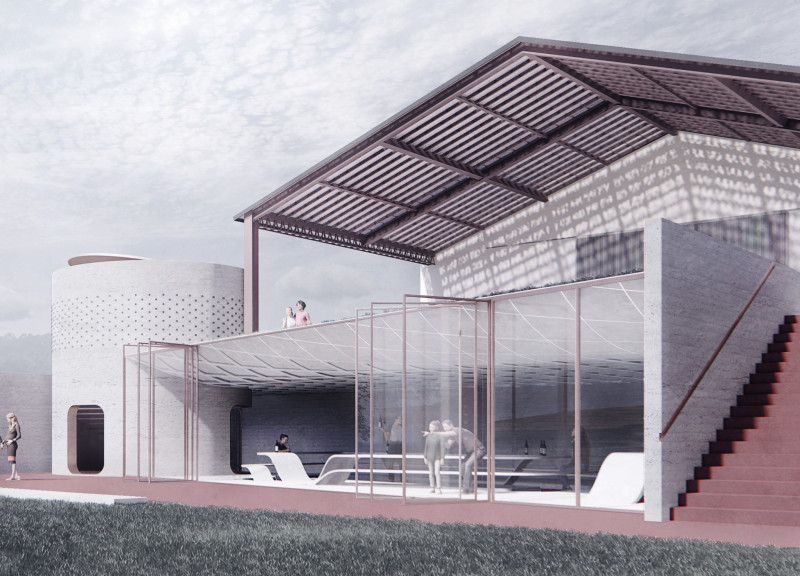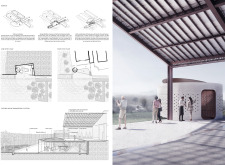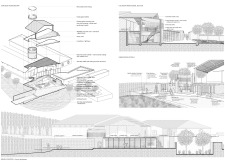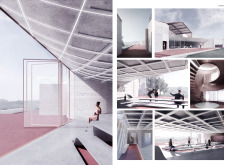5 key facts about this project
The architecture utilizes a range of materials that reflect the region’s identity. It incorporates rammed earth for walls, providing thermal mass and a tactile connection to traditional construction techniques. The implementation of large glass panels allows for abundant natural light and unobstructed views, effectively blurring the lines between indoor and outdoor spaces. The design incorporates various zones dedicated to different activities—central to this is the tasting room, which serves as the main gathering space.
The Tasty Tank distinguishes itself through its strategic layout and integration with the landscape. The separation of functional spaces into distinct zones enhances visitor experience by creating a flow that encourages exploration. The project includes both a below square and a high square, each designed to offer unique perspectives of the surrounding vineyard. This design approach enables a smooth transition between the built environment and nature.
Material selection plays a crucial role in this architectural project. The use of rammed earth not only emphasizes local construction techniques but also contributes to energy efficiency. The combination of concrete for structural elements, steel for added durability, and wood for warmth creates a visually compelling and environmentally responsive building. Perforated metallic roofing enhances light diffusion while providing ventilation, showcasing a thoughtful interaction between form and function.
In addition, the design incorporates sustainable landscaping features. Elements such as anti-slip pathways and strategically placed seating encourage outdoor engagement, integrating the overall experience of the project with its vineyard setting. This focus on both environmental and user-centric design makes the Tasty Tank a relevant addition to the geographic landscape.
For those interested in exploring the intricate details of this architectural project, it is recommended to review the architectural plans and sections. An examination of the architectural designs and ideas will provide further insights into the design philosophy and execution of the Tasty Tank.


























